50g
Showing 1201–1250 of 1859 results
-
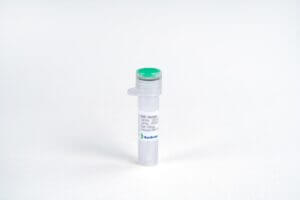
IL-22, Mouse
$276.00 Add to cart View Product DetailsInterleukin-22 (IL-22) is a member of a group of cytokines called the IL-10 family which include IL-10,IL-19, IL-20, IL-24, and IL-26. IL-22 shares use of the IL-10R2 in cell signaling with other members of this family IL-22 signals through a receptor system consisting of IL-10R-β/CRF2-4 and IL-22R, both of which are members of the class II cytokine-receptor family. IL-22 is produced by activated DCs and T cells and initiates an innate immune response against bacterial pathogens especially in epithelial cells such as those in the respiratory tract and gut. IL-22 along with IL-17 is rapidly produced by splenic LTi-like cells and can also be produced by Th17 cells, which plays a likely role in the coordinated response of both adaptive and innate immune systems.
-

IL-22, Mouse
$306.19 Add to cart View Product DetailsInterleukin-22 (IL-22) is a member of a group of cytokines called the IL-10 family which include IL-10,IL-19, IL-20, IL-24, and IL-26. IL-22 shares use of the IL-10R2 in cell signaling with other members of this family IL-22 signals through a receptor system consisting of IL-10R-β/CRF2-4 and IL-22R, both of which are members of the class II cytokine-receptor family. IL-22 is produced by activated DCs and T cells and initiates an innate immune response against bacterial pathogens especially in epithelial cells such as those in the respiratory tract and gut. IL-22 along with IL-17 is rapidly produced by splenic LTi-like cells and can also be produced by Th17 cells, which plays a likely role in the coordinated response of both adaptive and innate immune systems.
-

IL-3, Human
$155.25 Add to cart View Product DetailsInterleukin-3 (IL-3) is a pleiotropic cytokine belonging to the interleukin family. IL-3 shares similarities with Granulocyte-Macrophage Colony-Stimulating Factor (GM-CSF) and IL-5: they all have a four-helix bundle structure, are located on the same chromosomes in both human and mouse, are produced by activated T cells, and share receptors. The IL-3/IL-5/GM-CSF receptor family members are all heterodimeric, composed of a receptor-specific α chain and a common β chain. IL-3 is also called multi-colony stimulating factor since it stimulates the development and colony formation of multiple lineages of hematopoietic cells by activating intracellular pathways such as Ras-Raf-ERK and JAK/STAT. IL-3 inhibits apoptosis and promotes cell survival by targeting the anti-apoptotic bcl-2 gene family.
-

IL-3, Human(CHO-expressed)
$133.69 Add to cart View Product DetailsInterleukin-3 (IL-3) is a pleiotropic cytokine belonging to the interleukin family. IL-3 shares similarities with Granulocyte-Macrophage Colony-Stimulating Factor (GM-CSF) and IL-5: they all have a four-helix bundle structure, are located on the same chromosomes in both human and mouse, are produced by activated T cells, and share receptors. The IL-3/IL-5/GM-CSF receptor family members are all heterodimeric, composed of a receptor-specific α chain and a common β chain. IL-3 is also called multi-colony stimulating factor since it stimulates the development and colony formation of multiple lineages of hematopoietic cells by activating intracellular pathways such as Ras-Raf-ERK and JAK/STAT. IL-3 inhibits apoptosis and promotes cell survival by targeting the anti-apoptotic bcl-2 gene family.
-

IL-3, Mouse
$271.69 Add to cart View Product DetailsInterleukin-3 (IL-3) is a pleiotropic cytokine belonging to the interleukin family. IL-3 shares similarities with Granulocyte-Macrophage Colony-Stimulating Factor (GM-CSF) and IL-5: they all have a four-helix bundle structure, are located on the same chromosomes in both human and mouse, are produced by activated T cells, and share receptors. The IL-3/IL-5/GM-CSF receptor family members are all heterodimeric, composed of a receptor-specific α chain and a common β chain. IL-3 is also called multi-colony stimulating factor since it stimulates the development and colony formation of multiple lineages of hematopoietic cells by activating intracellular pathways such as Ras-Raf-ERK and JAK/STAT. IL-3 inhibits apoptosis and promotes cell survival by targeting the anti-apoptotic bcl-2 gene family.
-

IL-33, Human
$271.69 Add to cart View Product DetailsInterleukin-33 (IL-33) is a proinflammatory cytokine that belongs to the IL-1 family. IL-33 is expressed in a variety of cells, including epithelial and endothelial cells, smooth muscle cells, macrophages and fibroblasts. The primary receptors for IL-33 are ST2 and IL-1 receptor accessory protein (IL-1RAcP), both of which belong to the IL-1 receptor family. IL-33 is localized to the nucleus of resting cells where it binds to chromatin in the H2A-H2B histone complex as a transcriptional suppressor. IL-33 is secreted by cells during injury which induces a T-helper 2 type inflammatory response. Evidence suggests IL-33 plays a role in autoimmune disease. IL-33’s interaction with ST2 can drive allergic pathology and IL-33 has been reported to play a role in the development of rheumatoid arthritis and systemic lupus erythematosus.
-

IL-4 R, Human
$379.50 Add to cart View Product DetailsInterleukin-4 Receptor, also known as IL-4RA and CD124, is a transmembrane glycoprotein belonging to the class I receptor family. It is highly expressed by activated T-cells. IL-4RA couples with γ chain to form the type I receptor for IL-4. The extracellular domain of IL-4RA binds to IL-4 and antagonizes its activity. IL-4RA plays an important role in Th2 cell differentiation, Ig class switching and alternative macrophage activation. It has also been implicated in allergic inflammation, tumor progression and atherogenesis.
-

IL-4, Human
$155.25 Add to cart View Product DetailsInterleukin-4 (IL-4) is a pleiotropic cytokine regulates diverse T and B cell responses including cell proliferation, survival, and gene expression. It has important effects on the growth and differentiation of different immunologically competent cells. Interleukin-4 is produced by mast cells, T cells, and bone marrow stromal cells. IL-4 regulates the differentiation of native CD4+ T cells (Th0 cells) into helper Th2 cells, and regulates the immunoglobulin class switching to the IgG1 and IgE isotypes. IL-4 has numerous important biological functions including stimulating B-cells activation, T-cell proliferation and CD4+ T-cells differentiation to Th2 cells. It is a key regulator in hormone control and adaptive immunity. IL-4 also plays a major role in inflammation response and wound repair via activation of macrophage into M2 cells. IL-4 is stabilized by three disulphide bonds forming a compact globular protein structure. Four alpha-helix bundle with left-handed twist is dominated half of the protein structure with 2 overhand connections and fall into a 2-stranded anti-parallel beta sheet.
-

IL-4, Mouse
$133.69 Add to cart View Product DetailsInterleukin-4 (IL-4) is a pleiotropic cytokine regulates diverse T and B cell responses including cell proliferation, survival, and gene expression. It has important effects on the growth and differentiation of different immunologically competent cells. Interleukin-4 is produced by mast cells, T cells, and bone marrow stromal cells. IL-4 regulates the differentiation of native CD4+ T cells (Th0 cells) into helper Th2 cells, and regulates the immunoglobulin class switching to the IgG1 and IgE isotypes. IL-4 has numerous important biological functions including stimulating B-cells activation, T-cell proliferation and CD4+ T-cells differentiation to Th2 cells. It is a key regulator in hormone control and adaptive immunity. IL-4 also plays a major role in inflammation response and wound repair via activation of macrophage into M2 cells. IL-4 is stabilized by three disulphide bonds forming a compact globular protein structure. Four alpha-helix bundle with left-handed twist is dominated half of the protein structure with 2 overhand connections and fall into a 2-stranded anti-parallel beta sheet.
-
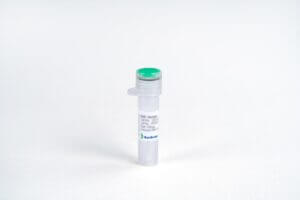
IL-4, Porcine
$340.69 Add to cart View Product DetailsInterleukin-4 (IL-4) is a pleiotropic cytokine regulates diverse T and B cell responses including cell proliferation, survival, and gene expression. It has important effects on the growth and differentiation of different immunologically competent cells. Interleukin-4 is produced by mast cells, T cells, and bone marrow stromal cells. IL-4 regulates the differentiation of native CD4+ T cells (Th0 cells) into helper Th2 cells, and regulates the immunoglobulin class switching to the IgG1 and IgE isotypes. IL-4 has numerous important biological functions including stimulating B-cells activation, T-cell proliferation and CD4+ T-cells differentiation to Th2 cells. It is a key regulator in hormone control and adaptive immunity. IL-4 also plays a major role in inflammation response and wound repair via activation of macrophage into M2 cells. IL-4 is stabilized by three disulphide bonds forming a compact globular protein structure. Four alpha-helix bundle with left-handed twist is dominated half of the protein structure with 2 overhand connections and fall into a 2-stranded anti-parallel beta sheet.
-

IL-5, Human
$194.06 Add to cart View Product DetailsInterleukin-5 (IL-5), produced by mast cells, T cells and eosinophils, is responsible for the activities attributed to eosinophil differentiating factor, B cell growth factor II and T cell-replacing factor (TRF). It can increase production and mobilization of eosinophils and CD34+ progenitors from the bone marrow. IL-5 plays an important role in inducing cell-mediated immunity against parasitic infections and certain tumors. IL-5 also promotes differentiation of basophils and primes them for histamine and leukotriene release.
-

IL-5, Human(CHO-expressed)
$194.06 Add to cart View Product DetailsInterleukin-5 (IL-5), produced by mast cells, T cells and eosinophils, is responsible for the activities attributed to eosinophil differentiating factor, B cell growth factor II and T cell-replacing factor (TRF). It can increase production and mobilization of eosinophils and CD34+ progenitors from the bone marrow. IL-5 plays an important role in inducing cell-mediated immunity against parasitic infections and certain tumors. IL-5 also promotes differentiation of basophils and primes them for histamine and leukotriene release.
-

IL-5, Mouse
$194.06 Add to cart View Product DetailsInterleukin-5 (IL-5), produced by mast cells, T cells and eosinophils, is responsible for the activities attributed to eosinophil differentiating factor, B cell growth factor II and T cell-replacing factor (TRF). It can increase production and mobilization of eosinophils and CD34+ progenitors from the bone marrow. IL-5 plays an important role in inducing cell-mediated immunity against parasitic infections and certain tumors. IL-5 also promotes differentiation of basophils and primes them for histamine and leukotriene release.
-

IL-5, Mouse(CHO-expressed)
$194.06 Add to cart View Product DetailsInterleukin-5 (IL-5), produced by mast cells, T cells and eosinophils, is responsible for the activities attributed to eosinophil differentiating factor, B cell growth factor II and T cell-replacing factor (TRF). It can increase production and mobilization of eosinophils and CD34+ progenitors from the bone marrow. IL-5 plays an important role in inducing cell-mediated immunity against parasitic infections and certain tumors. IL-5 also promotes differentiation of basophils and primes them for histamine and leukotriene release.
-

IL-5, Rat
$271.69 Add to cart View Product DetailsInterleukin-5 (IL-5), produced by mast cells, T cells and eosinophils, is responsible for the activities attributed to eosinophil differentiating factor, B cell growth factor II and T cell-replacing factor (TRF). It can increase production and mobilization of eosinophils and CD34+ progenitors from the bone marrow. IL-5 plays an important role in inducing cell-mediated immunity against parasitic infections and certain tumors. IL-5 also promotes differentiation of basophils and primes them for histamine and leukotriene release.
-

IL-5, Rat
$271.69 Add to cart View Product DetailsInterleukin-5 (IL-5), produced by mast cells, T cells and eosinophils, mediates the activities of eosinophil differentiating factor, B cell growth factor II and T cell-replacing factor (TRF). It can increase production and mobilization of eosinophils and CD34+ progenitors from the bone marrow. IL-5 plays an important role in inducing cell-mediated immunity against parasitic infections and certain tumors. IL-5 also promotes differentiation of basophils and primes them for histamine and leukotriene release.
-

IL-5RA, His, Human
$293.25 Add to cart View Product DetailsInterleukin-5 Receptor alpha (IL-5Rα, CD125) is a 60 kDa hematopoietin receptor that plays a dominant role in eosinophil biology. Mature human IL-5 Rα consists of a 322 aa extracellular domain (ECD) with a WSxWS motif and a four cysteine motif, a 20 aa transmembrane segment, and a 58 aa cytoplasmic domain. Within the ECD, human IL-5Rα shares 71% aa sequence identity with mouse and rat IL-5 Rα. Alternate splicing of human IL-5 Rα generates soluble secreted forms which function as IL-5 antagonists. The high affinity receptor for IL-5 is a complex that consists of the ligand binding IL-5 Rα and the transmembrane common β chain (βc/CD131) which is shared with the receptor complexes for IL-3 and GMCSF. IL-5 Rα binds IL-5 at low affinity and then associates with preformed βc oligomers to form the signaling competent receptor complex. IL-5 stimulation of CD34+ hematopoietic progenitor cells induces the up-regulation of transmembrane IL-5Rα followed by eosinophilic differentiation and activation.
-
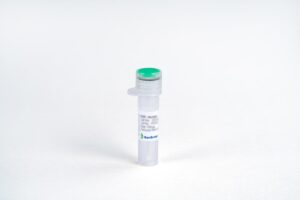
IL-6, Human
$155.25 Add to cart View Product DetailsInterleukin-6 (IL-6), also known as BSF-2, CDF and IFNB2, is a pleiotropic cytokine that participates in both pro-inflammatory and anti-inflammatory responses. It is produced mainly by T cells, macrophages, monocytes, endothelial cells and muscle cells. IL-6 binds to IL-6 receptor (IL-6R) to trigger the association of IL-6R with gp130, inducing signal transduction through JAKs and STATs. The biological functions of IL-6 are diverse. It stimulates B cell differentiation and antibody production, myeloma and plasmacytoma growth, and nerve cell differentiation. It also acts as a myokine, produced by muscle cells in response to muscle contraction and released into the blood stream to help break down fats and improve insulin resistance.
-

IL-6, Human(CHO-expressed)
$146.63 Add to cart View Product DetailsInterleukin-6 (IL-6), also known as BSF-2, CDF and IFNB2, is a pleiotropic cytokine that acts in both pro-inflammatory and anti-inflammatory responses. It is produced mainly by T cells, macrophages, monocytes, endothelial cells and muscle cells. IL-6 binds to IL-6 receptor (IL-6R) to trigger the association of IL-6R with gp130, inducing signal transduction through JAKs and STATs. The biological functions of IL-6 are diverse. It stimulates B cell differentiation and antibody production, myeloma and plasmacytoma growth, as well as nerve cell differentiation. It also acts as a myokine, produced by muscle cells in response to muscle contraction, to be released to the blood stream to help break down fats and improve insulin resistance.
-

IL-6R, Human
$379.50 Add to cart View Product DetailsInterleukin-6 Receptor Alpha, also known as IL-6RA, IL-6R1 and CD126, belongs to the type I cytokine receptor family. It is mainly expressed on T cells, fibroblasts and macrophages. IL-6RA couples with gp130 to form the IL-6 receptor; IL-6RA binds specifically to IL-6 and depends on gp130 to transmit signals. IL-6RA dysfunction has been correlated with the pathogenesis of many diseases, such as multiple myeloma, autoimmune diseases and prostate cancer. Soluble IL-6RA, which consists of only the extracellular domain of IL-6RA, acts as an agonist of IL-6 activity.
-

IL-7, His, Mouse
$314.81 Add to cart View Product DetailsInterleukin-7 (IL-7), also known as lymphopoietin 1 and pre-B cell factor, is a hematopoietic growth factor belonging to the IL-7/IL-9 family. It is produced by keratinocytes, dendritic cells, hepatocytes, neurons and epithelial cells. IL-7 binds and signals through IL-7 receptor, a heterodimer consisting of IL-7 receptor alpha and common gamma chain receptor. IL-7 plays a role in regulating early B cell and T cell development. It is also important for optimal dendritic cell-T cell interaction.
-

IL-8/CXCL8 (77aa), Human(CHO-expressed)
$155.25 Add to cart View Product DetailsInterleukin-8 (IL-8), also known as CXCL8, GCP-1 and NAP-1, is one of the first discovered chemokines and belongs to the CXCL family, in which the first two conserved cysteines are separated by one residue. In vivo, IL-8 exists in two forms: a 77 a.a. protein produced by endothelial cells, and the more active 72 a.a. protein produced by monocytes. The receptors for IL-8 are the seven-helical G-protein coupled receptors CXCR1 and CXCR2, exclusively expressed on neutrophils. The functions of IL-8 are to induce rapid changes in cell morphology, activate integrins, and release the granule contents of neutrophils. Thus, IL-8 can enhance the antimicrobial actions of defense cells. It is secreted by monocytes, macrophages and endothelial cells. IL-8 signals through CXCR1 and CXCR2 to chemoattract neutrophils, basophils, and T cells. IL-8 is also a potent promoter of angiogenesis. Other functions of this protein, such as involvement in bronchiolitis pathogenesis, have also been reported.
-
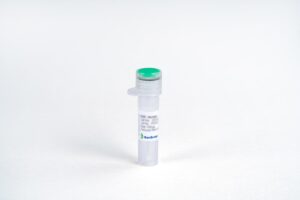
IL-9, Human
$271.69 Add to cart View Product DetailsInterleukin 9, also known as IL9, is a cytokine (cell signalling molecule) belonging to the group of interleukins. The protein encoded by this gene is a cytokine produced by T-cells and specifically by CD4+ helper cells that acts as a regulator of a variety of hematopoietic cells. This cytokine stimulates cell proliferation and prevents apoptosis. It functions through the interleukin-9 receptor (IL9R), which activates different signal transducer and activator (STAT) proteins and thus connects this cytokine to various biological processes. The gene encoding this cytokine has been identified as a candidate gene for asthma. Genetic studies on a mouse model of asthma demonstrated that this cytokine is a determining factor in the pathogenesis of bronchial hyperresponsiveness.
-

IL-9, Mouse
$340.69 Add to cart View Product DetailsInterleukin 9, also known as IL9, is a cytokine (cell signalling molecule) belonging to the group of interleukins. The protein encoded by this gene is a cytokine produced by T-cells and specifically by CD4+ helper cells that acts as a regulator of a variety of hematopoietic cells. This cytokine stimulates cell proliferation and prevents apoptosis. It functions through the interleukin-9 receptor (IL9R), which activates different signal transducer and activator (STAT) proteins and thus connects this cytokine to various biological processes. The gene encoding this cytokine has been identified as a candidate gene for asthma. Genetic studies on a mouse model of asthma demonstrated that this cytokine is a determining factor in the pathogenesis of bronchial hyperresponsiveness.
-

Indazole-3-carboxylic Acid Methyl Ester
$352.76 Add to cart View Product DetailsMolecular Formula : C9H8N2O2
-

Indium(III) Trifluoromethanesulfonate
$324.30 Add to cart View Product DetailsMolecular Formula : C3F9InO9S3
-

Indole-3-carbinol
$389.85 Add to cart View Product DetailsMolecular Formula : C9 H9 N O
-
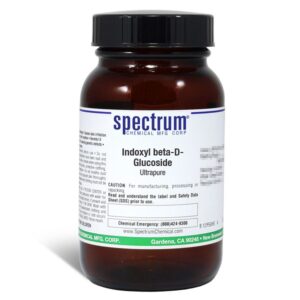
Indoxyl beta-D-Glucoside, Ultrapure
$7,322.63 Add to cart View Product DetailsIndoxyl beta-D-Glucoside, Ultrapure
-
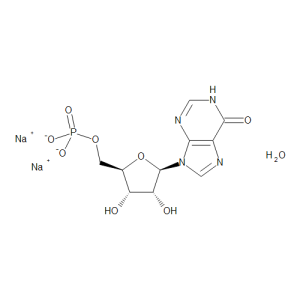
Inosine-5′-monophosphate Disodium Salt Hydrate
$103.50 Add to cart View Product DetailsMolecular Formula : C10 H11 N4 O8 P . 2[Na] . x[H2 O]
-

Iodine Monobromide
$82.80 Add to cart View Product DetailsMolecular Formula : I Br
-
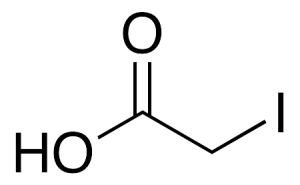
Iodoacetic Acid
$555.45 Add to cart View Product DetailsMolecular Formula : C2 H3 I O2
-

Iodobenzene
$198.38 Add to cart View Product DetailsMolecular Formula : C6 H5 I
-

Iodomethane
$247.54 Add to cart View Product DetailsMolecular Formula : C H3 I
-

IP-10/CXCL10, Human
$133.69 Add to cart View Product DetailsIP-10/CXCL10 also known as CXCL10, is originally identified as an IFN-γ-inducible gene in monocytes, fibroblasts and endothelial cells. It has since been shown that IP-10 mRNA is also induced by LPS, IL-1β, TNF-α, IL-12 and viruses. Additional cell types that have been shown to express IP-10 include activated T-lymphocytes, splenocytes, keratinocytes, osteoblasts, astrocytes, and smooth muscle cells. IP-10 is also expressed in psoriatic and lepromatous lesions of skin. The mouse homologue of human IP-10, Crg-2, has been cloned and shown to share approximately 67% amino acid sequence identity with human IP-10.
-

Irganox 1035
$169.05 Add to cart View Product DetailsMolecular Formula : C38 H58 O6 S
-
Iron
$60.38 Add to cart View Product DetailsMolecular Formula : Fe
-

Iron Saccharate
$120.75 Add to cart View Product DetailsMolecular Formula : [Na2Fe5O8(OH) • 3H2O]n •(C12H22O11)m
-
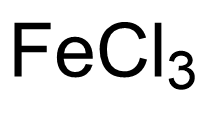
Iron(III) Chloride
$87.11 Add to cart View Product DetailsMolecular Formula : Cl3 Fe
-

Iron(III) Pyrophosphate
$83.66 Add to cart View Product DetailsMolecular Formula : Fe4(P2O7)3
-

Iso E Super (Mixture of Isomers) (>80%)
$133.69 Add to cart View Product DetailsMolecular Formula : C16 H26 O
-
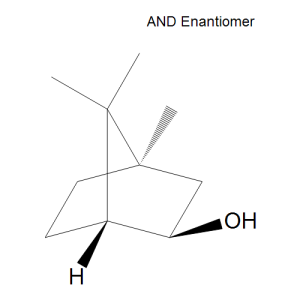
Isoborneol
$319.99 Add to cart View Product DetailsMolecular Formula : C10 H18 O
-

Isobutyl Acetoacetate
$144.04 Add to cart View Product DetailsMolecular Formula : C8H14O3
-
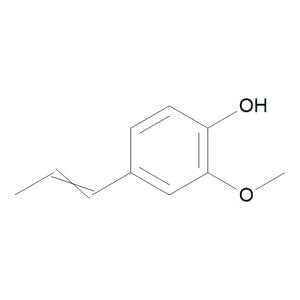
Isoeugenol
$82.80 Add to cart View Product DetailsMolecular Formula : C10 H12 O2
-

Isoflurane
$522.68 Add to cart View Product DetailsMolecular Formula : C3 H2 Cl F5 O
-
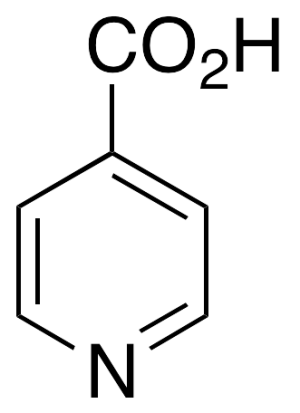
Isonicotinic Acid
$87.98 Add to cart View Product DetailsMolecular Formula : C6 H5 N O2
-
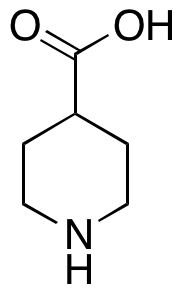
Isonipecotic Acid
$103.50 Add to cart View Product DetailsMolecular Formula : C6H11NO2
-
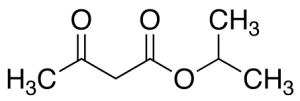
Isopropyl Acetoacetate
$127.65 Add to cart View Product DetailsMolecular Formula : C7 H12 O3
-
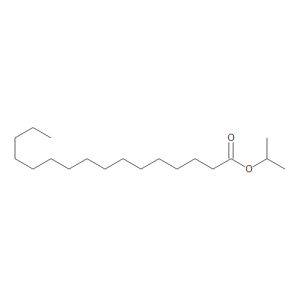
Isopropyl Palmitate
$157.84 Add to cart View Product DetailsMolecular Formula : C19 H38 O2
-

Isopropylamine
$78.49 Add to cart View Product DetailsMolecular Formula : C3H9N
-
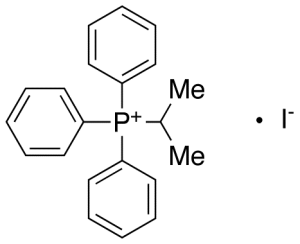
Isopropyltriphenylphosphonium Iodide
$292.39 Add to cart View Product DetailsMolecular Formula : C21H22IP






